Lighting Guide: Light Modifier Patterns
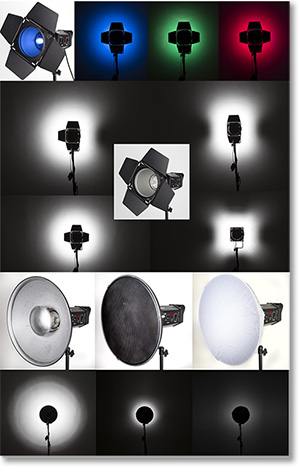
Understanding how light behaves is critical to being a good photographer. Part of understanding light is being able to "see" or "feel" the light as you move it around, adjust its intensity and modify its direction.
In the end, no amount of schooling or articles will replace practice. If you are anything like me, you can be told a hundred times how to do something and it won't be as good as simply seeing it once.
Becoming savvy to the ins and outs of the vast number of light modifiers can be intimidating to even a seasoned photographer.
I remember wishing when I was learning photography that there was a visual guide to each of the modifiers as to how they changed the light. It is in that spirit that we offer this guide to the lighting patterns of various flash modifiers.
Bare Bulb
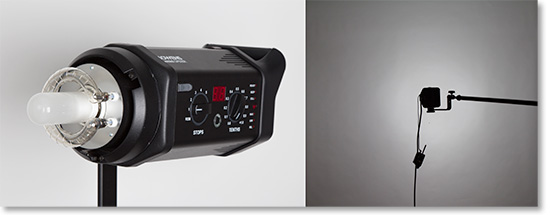
A bare bulb creates hard shadow and a broad light that diminishes as is it moves away from a subject.
Best Uses:
The uses of a completely unmodified bare bulb are limited, but they do exist. Think of a bare bulb as a replacement for the sun as it is a point of light rather than channeled light like the rest of the options.
Soft box Light
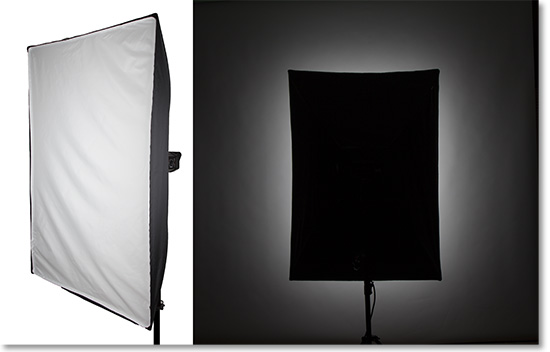
This really the go-to modifier in portrait photography. It creates a larger light source through diffusion that can be directed with minimal spill light.
Best Uses:
If you have no other modifiers, this should be your first acquisition. The larger, the better; but a small soft box is better than none.
Strip Light Soft box
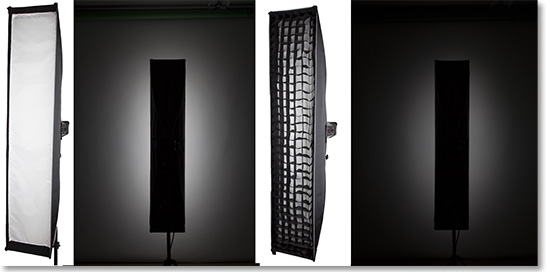
A bare bulb creates a broad harsh light that diminishes depending on its distance from a subject.
Best Uses:
When you are shooting individual full body shots and want minimal light spillage. Use a grid to focus light and reduce spill even more.
Grid or Honeycomb
As you may have noticed in the previous image, an additional attachment was applied to the strip light. This is called a grid. Grids are used to direct the light specifically without as much fall-off. They are usually made of canvas or other easily portable materials, although there are more rigid options available.
Notice the pattern from the strip light in the first image above. Although the strip soft box has directed the light to a long and thin strip, there is still a lot of fall-off around the edges. The grid was added for the second image and as you can see, it has significantly reduced the spillage.
The harder more-rigid cousin of the grid is the honeycomb which is is usually made of aluminum, plastic or other equally rigid materials. However, the terms are essentially interchangeable.The following modifier examples use honeycombs.
Beauty Dish
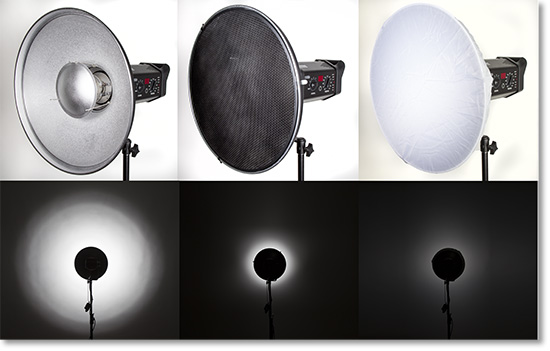
This modifier works by reflecting the light back into the reflective material of the dish. The result is an explosion of light. The image above shows the beauty dish alone, then with a honeycomb and finally with the honeycomb and a cloth diffuser.
Best Uses:
This is the probably the most useful modifier after the soft box. Many portrait professionals might argue that the beauty dish is even better or equally useful. Also, it can be used in conjunction with the soft box which we will cover in later articles.
Wide-Angle Dish
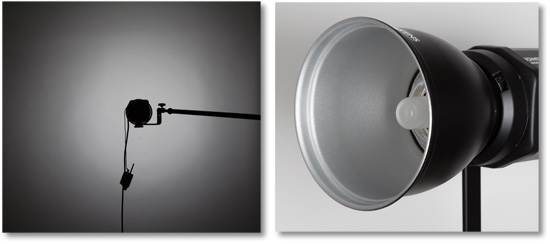
The wide-angle dish is often included with the purchase of a flash unit. It is very useful for creating a focus beam of light.
Best Uses:
This is essentially a focused bare bulb. As such, it throws down some hard shadows if not diffused.

Snoot

The distinctive shape of the snoot channels light into a tighter pattern than any of the other modifiers. This effect is even more so with a honeycomb attached as in the image below.
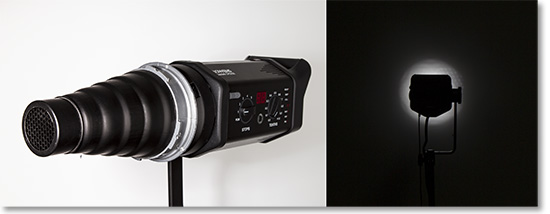
Best Uses:
This is a great modifier for narrow focus on a face or even just the eyes of a subject.
Barn Doors
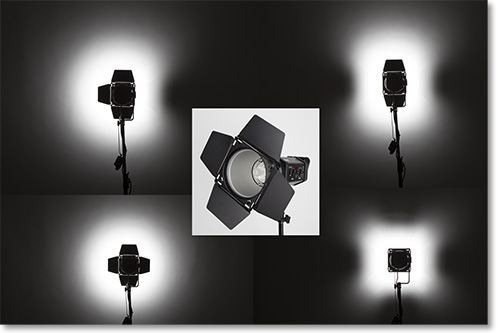
Barn door modifiers usually attach to a wide-angle dish. They are more commonly associated with movie or video lighting, but their versatility makes them very useful in portraiture.
Best Uses:
Barn doors are often overlooked by portrait photographers. It can serve as a good all-in-one attachment. Barn doors are the Swiss Army Knife of the lighting world. Like most things designed for versatility, it does more jobs than any other modifier. However, it doesn't do any of the functions as well as the modifier specifically designed for a single purpose. Diffusers for barn doors usually take the form of gels.
Gels
Color gels are placed over the end of a particular light to create a color cast. Gels may be clear or opaque to diffuse the light. They can be applied to any modifier, but are most common and easily used with the barn door attachments.
With the advent of digital photography and the widespread use of Photoshop, the usefulness of gels has lessened as their effect can be easily replicated digitally.
Gels will usually reduce the light output of your flash, so you will likely need to compensate.

In our next article, we will continue with the theme as it relates to the unique characteristics of speedlights and on-camera flashes. Also, we will explore umbrellas and specialty modifiers.
Stay updated with all our new releases and articles by signing up for our free email updates. We only send emails once a week to keep you updated and we NEVER spam or share your information.








